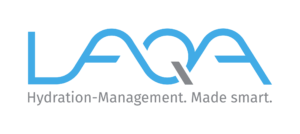[fusion_builder_container hundred_percent=”no” equal_height_columns=”no” hide_on_mobile=”small-visibility,medium-visibility,large-visibility” background_position=”center center” background_repeat=”no-repeat” fade=”no” background_parallax=”none” parallax_speed=”0.3″ video_aspect_ratio=”16:9″ video_loop=”yes” video_mute=”yes” overlay_opacity=”0.5″ border_style=”solid”][fusion_builder_row][fusion_builder_column type=”1_1″ layout=”1_1″ background_position=”left top” background_color=”” border_size=”” border_color=”” border_style=”solid” border_position=”all” spacing=”yes” background_image=”” background_repeat=”no-repeat” padding=”” margin_top=”0px” margin_bottom=”0px” class=”” id=”” animation_type=”” animation_speed=”0.3″ animation_direction=”left” hide_on_mobile=”small-visibility,medium-visibility,large-visibility” center_content=”no” last=”no” min_height=”” hover_type=”none” link=””][fusion_text]
From an ecological and economic point of view, drinking tap water is the best alternative to industrially bottled mineral water. This applies to the majority of cities, towns and municipalities in Germany. But there are also hotspots, such as in the southern Harz region, where drinking tap water can be a cause for concern. In the beautiful mountain and rose town of Sangerhausen, the idyll of historic buildings against an imposing Harz backdrop is deceptive, as the drinking water here contains harmful levels of nitrate, sulphate and, above all, uranium.
The danger from the tap at home
Anyone who turns on the tap at home in Sangerhausen usually does so with a bad feeling. Around 30,000 inhabitants are affected by a threefold drinking water contamination. Three hazardous substances are significantly elevated. The values for uranium are only just below the maximum permitted limit. As a toxic heavy metal, long-term intake of uranium can lead to permanent damage to the blood, kidneys and bones. Contamination by nitrate and sulphate also occurs. In the long term, this combination poses a considerable health risk to the human body. Especially in households with babies, small children, pregnant women, sick or elderly family members, tap water contaminated with uranium, sulphate and nitrate can lead to intensive health problems.
Solution for clean tap water on site
There would be a relatively simple solution to the drinking water problem for the village in the Harz Mountains, as it is not far from the Rappbode dam. In addition to the dam and reservoir, this Harz reservoir also includes a waterworks and a hydroelectric power station. Together with the Große Dhünn-Talsperre in Kürten, it is one of the two particularly large drinking water reservoirs in Germany. From the Rappbode dam, an approximately eight-kilometer-long connection pipeline could supply the residents of Sangerhausen with uncontaminated water from the dam. Funds for the construction of the pipeline have already been approved for years. However, the start of construction is repeatedly postponed.
Preventive health protection and health hazards
Drinking water is essential for life. The basic principle of precautionary health protection applies within the European Union. The drinking water that the water boards provide to supply households must not be harmful to health. However, this is currently the case. Since November 1, 2011, the limit value for uranium in drinking water has been ten micrograms per liter. On the one hand, this is set very high, and on the other hand, the limit is geared towards adults. Particularlyvulnerable groups, such as infants, young children, pregnant women, the sick and the elderly, are not adequately protected. The citizens’ campaign for uranium-free drinking water in Sangerhausen has repeatedly tried to draw the attention of the Südharz water board to the massive urgency of an uncontaminated drinking water supply and the health risks posed by uranium, sulphate and nitrate.
Help from the “water rescuers”
At the end of 2016, foodwatch was able to gain an impression of the tap water situation in Sangerhausen. The “food rescuers” from Berlin could now become the “water rescuers” in the Harz region. With an e-mail campaign, they are trying to get the Südharz water board to take action. Two initial small partial successes have already been achieved in January 2017. The water board has responded with a letter, albeit not a very precise one. More than 25,000 people have already signed the e-mail campaign. The latter demands a binding schedule from the water board by the end of January 2017, the completion of construction work on the connecting pipeline to the Rappbode dam by the end of 2017 and the interim supply of replacement water for particularly vulnerable groups of people.
A tip to help:
If you would like to support the local people in Sangerhausen, you can sign an e-mail petition from foodwatch . You can find out more directly on the ![]()
[/fusion_text][/fusion_builder_column][/fusion_builder_row][/fusion_builder_container]
